iraq
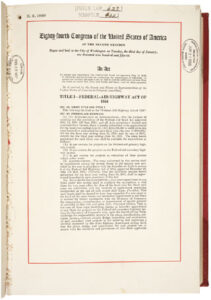 Many people think of the National Guard as a way to avoid going to war. They think that the Guard is designed to be a type of civil service group, but the reality is that they are a military, or actually a militia group. Never has that fact come to light more than now. The National Guard is considered a part of the reserve components of the United States Army and the United States Air Force. The difference between the regular military forces and the National Guard is that the National Guard usually serves in the United States, and not in wars abroad. Still, the president of the United States can “federalize” the National Guard for military action abroad. Reserve forces, including the guard, have made up about 45 percent of the personnel deployed to fight in Iraq and Afghanistan since 2001. While the deployment in Iraq and Afghanistan is currently the case, it is not normal procedure.
Many people think of the National Guard as a way to avoid going to war. They think that the Guard is designed to be a type of civil service group, but the reality is that they are a military, or actually a militia group. Never has that fact come to light more than now. The National Guard is considered a part of the reserve components of the United States Army and the United States Air Force. The difference between the regular military forces and the National Guard is that the National Guard usually serves in the United States, and not in wars abroad. Still, the president of the United States can “federalize” the National Guard for military action abroad. Reserve forces, including the guard, have made up about 45 percent of the personnel deployed to fight in Iraq and Afghanistan since 2001. While the deployment in Iraq and Afghanistan is currently the case, it is not normal procedure.
“The National Guard is a military reserve force composed of military members or units from each state and the territories of Guam, the Virgin Islands, Puerto Rico, and the District of Columbia, for a total of 54 separate organizations. All members of the National Guard of the United States are also members of the organized militia of the United States as defined by 10 U.S.C. § 246. Unlike the other parts of the military, these units are under the dual control of the state governments and the federal government, and can be deployed in disasters like hurricanes, tornados, floods, and even in situations of civil unrest and terrorist attacks.”
The National Guard was strictly a state-run militia before June 3, 1916, at which time, President Woodrow Wilson signed into law the National Defense Act, which expanded the size and scope of the National Guard. Prior to the National Defense Act, the National Guard was used for the needs of each state only. I never really thought about a state-run militia before, but the network of states’ militias that had been developing steadily 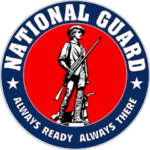 since colonial times, was now given the guaranteed status as the nation’s permanent reserve force. In times of the draft, the National Guard didn’t really get deployed. There were always enough soldiers available. It would most likely have to be a long-drawn-out war with many casualties before the National Guard was called out…as in Iraq and Afghanistan.
since colonial times, was now given the guaranteed status as the nation’s permanent reserve force. In times of the draft, the National Guard didn’t really get deployed. There were always enough soldiers available. It would most likely have to be a long-drawn-out war with many casualties before the National Guard was called out…as in Iraq and Afghanistan.
Theodore Roosevelt and other Republicans felt that the United States needed to get into World War I, in the first half of 1916, but with forces from the regular US Army, as well as the National Guard called out to face Mexican rebel leader Pancho Villa during his raids on states in the American Southwest, the need to reinforce the nation’s armed forces and increase US military preparedness became very apparent. The National Defense Act, ratified by Congress in May 1916 and signed by Wilson on June 3, brought the states’ militias more under federal control and gave the president authority, in case of war or national emergency, to mobilize the National Guard for the duration of the emergency. A logical use of the National Guard would have been during the riots seen in our country in 2019. The problem was that each state had to ask for help and some just didn’t.
One provision of the National Defense Act was that the term National Guard was to be used to refer to the combined network of states’ militias that became the primary reserve force for the US Army. The term had first been adopted by New York’s militia in the years before the Civil War in honor of the Marquis de Lafayette, a French hero of the American Revolution who commanded the “Garde Nationale” during the early days of the French Revolution in 1789. I guess they liked the name and felt like it accurately depicted the purpose of this 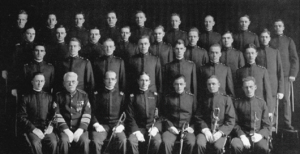 military force. Certain qualifications were also set in the National Defense Act. National Guard officers were allowed to attend Army schools. Also, all National Guard units would now be organized according to the standards of regular Army units. For the first time, National Guardsmen would receive payment from the federal government not only for their annual training…which was increased from 5 to 15 days, but also for their drills, which were also increased, from 24 per year to 48. Finally, the National Defense Act formally established the Reserve Officer Training Corps (ROTC) to train high school and college students for Army service.
military force. Certain qualifications were also set in the National Defense Act. National Guard officers were allowed to attend Army schools. Also, all National Guard units would now be organized according to the standards of regular Army units. For the first time, National Guardsmen would receive payment from the federal government not only for their annual training…which was increased from 5 to 15 days, but also for their drills, which were also increased, from 24 per year to 48. Finally, the National Defense Act formally established the Reserve Officer Training Corps (ROTC) to train high school and college students for Army service.
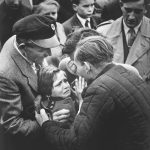 I think that over the years, we have all become used to men going off to war, and leaving their families safely at home, while they fight for the freedom and safety of people all over the world who are unknown to them. It’s a common part of war, and one that most of the time, the average person doesn’t even think about. It’s war after all, sacrifices have to be made. What we don’t always think about…until someone points out the obvious to us…is the families, and especially the children who are waiting for their parent to come home.
I think that over the years, we have all become used to men going off to war, and leaving their families safely at home, while they fight for the freedom and safety of people all over the world who are unknown to them. It’s a common part of war, and one that most of the time, the average person doesn’t even think about. It’s war after all, sacrifices have to be made. What we don’t always think about…until someone points out the obvious to us…is the families, and especially the children who are waiting for their parent to come home.
For any of us who have been away from family for an extended period of time, it’s easy to understand just how badly you can miss someone you love, but war is different. When your child moves away, you miss them, but you know you can go see them 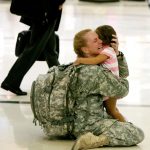 soon. When you loved one goes off to war in a country where the fighting is heavy, and bombs are dropping everywhere…not only can you not go visit them whenever you want to, but you live with the knowledge that at any moment, they could be killed in action. And they are living with that knowledge too. It makes the time and distance seem much longer and much further than it really is.
soon. When you loved one goes off to war in a country where the fighting is heavy, and bombs are dropping everywhere…not only can you not go visit them whenever you want to, but you live with the knowledge that at any moment, they could be killed in action. And they are living with that knowledge too. It makes the time and distance seem much longer and much further than it really is.
While we might be able to fathom the pain of missing a family member, I think we find it even harder to grasp the complete and utter shocked sense of relief that these family members feel when they are reunited with their loved one again. The children are especially heart wrenching…or is it heart warming. It doesn’t really matter which it is,  because no one watching it does so without tears. It’s just impossible. When a German World War II prisoner, was released by the Soviet Union, and is reunited with his daughter, she cannot control her emotions. She had not seen her father since she was one year old, and she is about 5 years old. A mom who spent 7 months in Iraq, cannot contain herself when she sees her daughter again. An officer’s son breaks down because he wasn’t sure he would ever see his daddy again. These are the moments most of us never got to see, but now with the internet,we have the chance to look into the lives of those who serve our nation, fight our battles, and protect our world. It is in those moments that we realize what really happens when those who serve are reunited with their loved ones again.
because no one watching it does so without tears. It’s just impossible. When a German World War II prisoner, was released by the Soviet Union, and is reunited with his daughter, she cannot control her emotions. She had not seen her father since she was one year old, and she is about 5 years old. A mom who spent 7 months in Iraq, cannot contain herself when she sees her daughter again. An officer’s son breaks down because he wasn’t sure he would ever see his daddy again. These are the moments most of us never got to see, but now with the internet,we have the chance to look into the lives of those who serve our nation, fight our battles, and protect our world. It is in those moments that we realize what really happens when those who serve are reunited with their loved ones again.
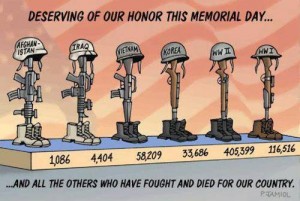 Our country has been involved in so many wars in its relatively short history, protecting both our freedom and many other countries from the oppression imposed by so many evil dictators and nations. Some people don’t think the United States should be the guardian of the nations, but when push comes to shove, the United States is always the one they call to come in and save them. In all reality, the only countries who wish we would just stay out of things, are the ones who have overstepped their boundaries, and are trying to do evil in the helpless nations they have occupied.
Our country has been involved in so many wars in its relatively short history, protecting both our freedom and many other countries from the oppression imposed by so many evil dictators and nations. Some people don’t think the United States should be the guardian of the nations, but when push comes to shove, the United States is always the one they call to come in and save them. In all reality, the only countries who wish we would just stay out of things, are the ones who have overstepped their boundaries, and are trying to do evil in the helpless nations they have occupied.
Of course, no military machine can function without the sacrifice in time and lives of people. Military men and women who are willing to make that sacrifice are a rare breed indeed. True, in years past there was a draft, but even then, there were those who volunteered, like my dad and many others. They saw a need, and knew that they had to answer the call to duty.
Over the course of the major wars the United States has been involved in beginning at World War I, we have lost a total of 619,300 men and women. That is an astounding number of people. Fighting evil is a costly business, both in money, and more importantly in the lives we have lost. Nevertheless, if we allow evil to prevail, we are in a far worse position. That is something every soldier knows all too well. It is what brings them to the point of making the decision to serve…to fight, and give their lives if necessary. It isn’t that they don’t know what they are getting into, because they do. They know that as a soldier, they will be taking the 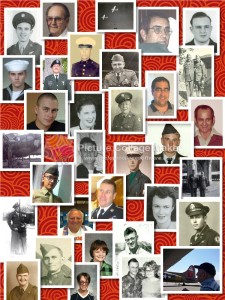 ultimate chance with their life, and they know that they may lose their life. And yet they serve. That is the picture of a true hero.
ultimate chance with their life, and they know that they may lose their life. And yet they serve. That is the picture of a true hero.
There are those who condemn our soldiers for their sacrifice, those who protest, and scream hate at them, but what they don’t really understand is that their very right to protest, scream, and even hate, comes from the fight our soldiers have waged to protect that very freedom. It is a tough job, and often thankless, but they fight because they can see what is right and what is wrong. It is wrong for anyone to steal the freedoms of another human being, and it is wrong for them to try to force their will on others. Soldiers have the vision to see this, and even when hate is aimed at them, they will fight for the rights of those who hate. Yes, soldiers are a rare breed, and they are heroes. They deserve our respect, and they deserve the honor and respect that this day is all about. Happy Memorial Day!! Be sure to thank a Veteran today.
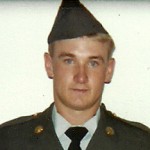 Once a war is over, the people of the world, and especially those who fought in the war never really want to think about it again, but it is, nevertheless, a permanent part of history. It was on this day, January 16, 1991 that America would go to war with Iraq for the first time, and it would be a war that would ultimately draw my brother-in-law, Ron Schulenberg back into the service from the reserves, which is where every soldier is for a time following their active duty term. Ron had joined the Army during a time when things were relatively quiet around the world, and he also ended his active service during a relative time of peace, but all that would change for him when he was notified that he would have to go back to active duty, and to Iraq.
Once a war is over, the people of the world, and especially those who fought in the war never really want to think about it again, but it is, nevertheless, a permanent part of history. It was on this day, January 16, 1991 that America would go to war with Iraq for the first time, and it would be a war that would ultimately draw my brother-in-law, Ron Schulenberg back into the service from the reserves, which is where every soldier is for a time following their active duty term. Ron had joined the Army during a time when things were relatively quiet around the world, and he also ended his active service during a relative time of peace, but all that would change for him when he was notified that he would have to go back to active duty, and to Iraq.
I can only imagine how Ron felt upon receiving that letter. I know how the rest of us felt. We were very concerned for Ron’s safety. None of us wanted him to go, but this was not up to us. The government, and specifically the Army had spoken, and go he would. I remember talking to him about his time over there, years later. One of the things that most civilians wonder about is things like how they felt about killing someone else, or even just seeing a dead body that had been mutilated by the weapons of warfare. For Ron, one of the  strongest memories was marching from one place to another and seeing all the death that was all around them…and then simply stepping over it, like it was a rock or tree stump. In my mind, that would be almost impossible to do, but I suppose that you simply get used to some things…or as much as anyone can get used to war and death.
strongest memories was marching from one place to another and seeing all the death that was all around them…and then simply stepping over it, like it was a rock or tree stump. In my mind, that would be almost impossible to do, but I suppose that you simply get used to some things…or as much as anyone can get used to war and death.
The Persian Gulf War…known as Operation Desert Storm, was a short lived war. Saddam Hussein invaded the little country of Kuwait, because of their oil, making Egypt and Saudi Arabia very nervous, so they called on the United States. When Saddam Hussein refused to leave Kuwait, the war began. The biggest anomaly in Operation Desert Storm, was that the Iraqi soldiers were either not well enough equipped, or simply not willing to die for this cause, and so may of them actually came up to the American troops, and surrendered. I’m sure that the initial fighting, and the amount of war dead lying around the desert, made the decision to surrender seem like the best option. Ron told of this anomaly when we talked about his experiences, and it seemed that it was with a continued sense of relief. I can imagine that the thought of having to kill someone was not one that my brother-in-law relished, but something he would have had to do, had it became necessary.
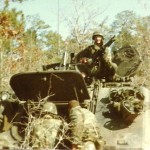
Ron returned to us from Operation Desert Storm, and his time in the reserves ended. The Persian Gulf area would continue to become more and more unstable, but by the time America would again find herself at war with Iraq and Saddam Hussein, Ron was not required to go. While it is my belief that the second war with Iraq has been far more successful, it has also been filed with far more casualties. I believe that if we had gone in and removed Saddam Hussein during Operation Desert Storm, the world would have been a better place. Would that have prevented the need to go back? I don’t know, but it would have spared many of the lives of the countless people that Saddam Hussein slaughtered during his time in power.
 For the past several weeks, I have been exchanging emails and lots of information with a man named John B Knox. He is my husband, Bob Schulenberg’s sixth cousin once removed. I came across his website about a year or so ago, but it wasn’t until recently that I decided to contact him. This was such a great decision on my part, because it has been an interesting journey. Because John had the last name of Knox, and some of the same relatives that I knew to be in the Knox line of my mother-in-law’s family, I had no doubt in my mind that we are related, but I didn’t know the exact relationship. Finding someone who is a descendant of an aunt or uncle back in the 1800s and especially beyond that, isn’t as easy as one might think. It is very helpful when you find someone who has researched their family history as well as John has, because the research is more that half done. It was easy for John to connect our two lines and tell me exactly what the connection was. John is a very thorough person too, so he was able to send me an easy to follow diagram of the connection. Now, my family tree shows the connection to John and his family in detail.
For the past several weeks, I have been exchanging emails and lots of information with a man named John B Knox. He is my husband, Bob Schulenberg’s sixth cousin once removed. I came across his website about a year or so ago, but it wasn’t until recently that I decided to contact him. This was such a great decision on my part, because it has been an interesting journey. Because John had the last name of Knox, and some of the same relatives that I knew to be in the Knox line of my mother-in-law’s family, I had no doubt in my mind that we are related, but I didn’t know the exact relationship. Finding someone who is a descendant of an aunt or uncle back in the 1800s and especially beyond that, isn’t as easy as one might think. It is very helpful when you find someone who has researched their family history as well as John has, because the research is more that half done. It was easy for John to connect our two lines and tell me exactly what the connection was. John is a very thorough person too, so he was able to send me an easy to follow diagram of the connection. Now, my family tree shows the connection to John and his family in detail.
Getting to know John has been a lot of fun. He was born in Kentucky, but he and his family now live in Washington DC. I could try to summarize his career, but I think he says it best so I will quote it instead. According to John’s LinkedIn page, “I currently serve as a Congressional Liaison for the Defense Intelligence Agency (DIA). My background includes two decades+ of experience in management, strategic planning, change management, international business development, customer relations and team building. Highlights include my seven years as NASA’s Manager of Video Applications. The 35-member team that I led, using the world class production facilities that my team designed and built, won 44 awards on behalf of the space agency, including four Emmy’s. That record at NASA remains unmatched. I co-chaired the agency-wide Standards Committee for High Definition Television at NASA which established technical guidelines for the space agency’s transition to HDTV. Today, the guidelines which my group developed, continues to insure the interoperability of communications between each of NASA’s ten world-class research centers and the International Space Station. While serving as the DIA’s Contracting Office Manager in Baghdad, Iraq, I oversaw a “ground-up” conversion of twelve Iraqi buildings for use as DIA’s in-country Headquarters, Annex and billeting for deployed U.S. personnel. For this project, I was awarded DIA’s Civilian Combat Support Award. Most recently, I drafted, proposed and am currently leading the implementation the first Congressional Communications Strategic Plan for DIA. I hold a Bachelor’s Degree in Communications Technology, a Master’s Degree in Media Management (Magna Cum Laude graduate) and a Master Of Business Administration (MBA) Degree with a concentration in management.” All I could say to that was…”Wow!!”
This, of course, lets me know that I really knew nothing of the person, that I had so boldly contacted, and who so graciously contacted me back, and has helped me immensely with my inquiries. I have always known that the Knox family has been heavily into politics, and other areas of government work, and this Knox family member has obviously followed in the footsteps of his ancestors. I can’t say that I’m disappointed in that. I also know that his work at NASA interests me as well. I’m sure he would not have brought all this up to me on his own, because he never made the conversations we had about himself, but rather about the family history, and our connection to it. I think he is probably a humble man, and only put the information I gave here on LinkedIn, because that is what he was supposed to do on LinkedIn. Nevertheless, I must say that I am impressed with all he has done, and excited to know him and to get to know his family as wall. John and his wife Lisa have two daughters, Lindsey and Kelly. I am excited about this new branch of my family history, and I look forward to getting to know this family even better.

